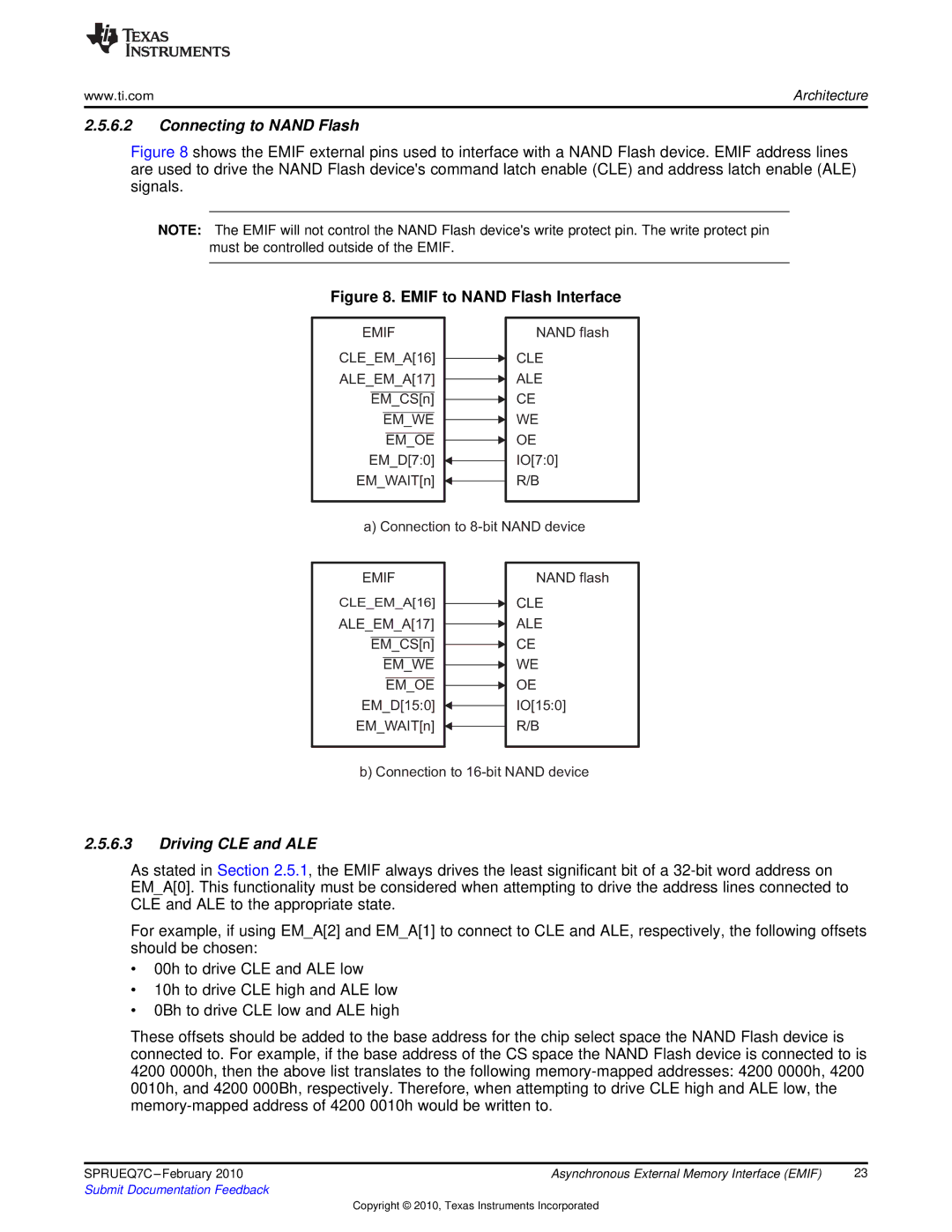
www.ti.com | Architecture |
2.5.6.2Connecting to NAND Flash
Figure 8 shows the EMIF external pins used to interface with a NAND Flash device. EMIF address lines are used to drive the NAND Flash device'scommand latch enable (CLE) and address latch enable (ALE) signals.
NOTE: The EMIF will not control the NAND Flash device'swrite protect pin. The write protect pin must be controlled outside of the EMIF.
Figure 8. EMIF to NAND Flash Interface
EMIF
CLE_EM_A[16] ALE_EM_A[17] EM_CS[n]
EM_WE
EM_OE EM_D[7:0] EM_WAIT[n]
NAND flash
CLE
ALE
CE
WE
OE
IO[7:0]
R/B
a) Connection to
EMIF
CLE_EM_A[16]
ALE_EM_A[17] EM_CS[n] EM_WE EM_OE EM_D[15:0] EM_WAIT[n]
NAND flash
CLE
ALE
CE
WE
OE
IO[15:0]
R/B
b) Connection to
2.5.6.3Driving CLE and ALE
As stated in Section 2.5.1, the EMIF always drives the least significant bit of a
For example, if using EM_A[2] and EM_A[1] to connect to CLE and ALE, respectively, the following offsets should be chosen:
•00h to drive CLE and ALE low
•10h to drive CLE high and ALE low
•0Bh to drive CLE low and ALE high
These offsets should be added to the base address for the chip select space the NAND Flash device is connected to. For example, if the base address of the CS space the NAND Flash device is connected to is 4200 0000h, then the above list translates to the following
SPRUEQ7C | Asynchronous External Memory Interface (EMIF) | 23 |
Submit Documentation Feedback |
|
|
Copyright © 2010, Texas Instruments Incorporated
